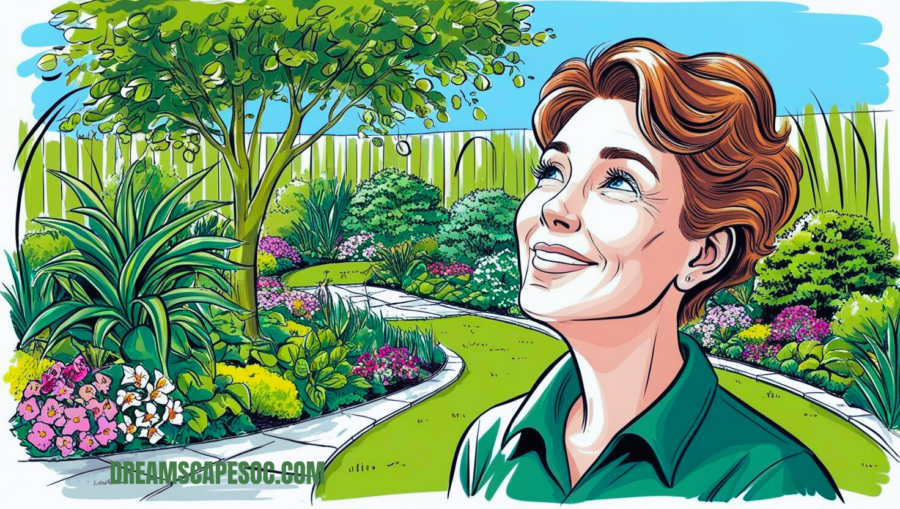What Is Vegetable Companion Planting?
Simply put, vegetable companion planting is about positioning certain plants near each other so they can benefit each other. This method has been around for centuries and works wonders by creating a garden where plants work together naturally. Some plants release chemicals that deter pests, others attract helpful insects, and some even offer shade or support to their neighboring plants. Though companion planting may require a little planning, the payoff in healthier plants and a more balanced garden is well worth the effort.
Click here for instant access to Landscaping Design Ideas.
The Advantages of Planting Vegetable Companions
Adopting companion planting allows you to establish a community of plants that help one another rather than merely growing a garden. This is how it operates.
- Organic Pest Management: Natural pest management is one of companion planting’s most significant benefits. Some plants act as natural insect repellents by releasing chemicals or scents that keep unwanted insects away. For instance, marigolds can keep worms and aphids away, and basil helps keep flies and mosquitoes away. You can protect your crops by putting pest-repellent plants next to sensitive ones without using hazardous insecticides.
- Enhanced Growth and Flavor: Certain plant pairings grow well together and taste better; Basil enhances their flavor when planted near tomatoes and deters certain insects. Meanwhile, nitrogen-fixing plants like peas and beans enrich the soil, which boosts the growth of neighboring veggies that crave nitrogen.
- Better Health of the Soil: Companion plants do more than just the plants above ground when it comes to companion planting. Numerous plants are unsung heroes that improve the fertility and structure of the soil. For example, legumes enrich the soil with nitrogen, which makes it possible for nitrogen-loving plants like leafy greens to thrive.
- Increased Garden Productivity: Combining complementary plants can boost your garden’s yield. Besides preventing weeds from growing, companion planting adds diversity and aesthetic appeal to your design. The outcome? is a lovely, lush garden with functional and decorative uses.
Transform Your Outdoor Space Today – Download Your Free Landscaping and Gardening Checklist”
Top Vegetable Companion Pairings
Certain traditional vegetable combinations complement one another organically. These combinations can maximize your garden’s space, discourage pests, and promote growth. A few favorites are listed here.
- Not only are tomatoes and basil a culinary match made in heaven, but they are also a powerful combination for the garden. In addition to improving tomato flavor, basil helps repel bothersome pests like flies, aphids, and mosquitoes. Plus, basil also thrives near peppers, which benefit from its pest-deterring properties.
- Carrots and Onions: Carrots and onions make a great team in the garden. Onions release a strong scent that keeps carrot flies at bay, while carrots help aerate the soil around onions. This pairing is perfect for gardeners looking for an easy, low-maintenance combo.
- Corn, Beans, and Squash (The Three Sisters): This age-old combination, known as the “Three Sisters,” works beautifully together. Corn is a natural support for climbing beans, which help fix nitrogen in the soil. Meanwhile, squash spreads on the ground to block weeds and keep moisture. These three plants thrive together, each adding something unique to the mix.
- Cucumbers and Radishes: the ultimate cucumber companions, deterring cucumber beetles and other pesky insects. Since radishes proliferate, you can harvest them before cucumbers need the extra space, making this combo efficient and effective.
- Lettuce and Carrots: Lettuce and carrots are another winning combo. Lettuce keeps carrots calm and content during hot months by providing shade. Taking care of both plants is simple because they like similar watering conditions.
- The combination of spinach and strawberries may seem unusual but compelling. Strawberries like shade and additional soil moisture, while spinach serves as a ground cover and helps keep weeds at bay.

Plants to Avoid Pairing Together
Not all plants get along. Some combinations can hinder growth or attract unwanted pests. Here are a few pairs you should keep apart in your garden.
- Onions and Beans: Beans are sensitive to the chemicals that onions release, which can stunt their growth. To help beans thrive, it’s best to keep onions at a distance.
- Tomatoes and Potatoes: While they belong to the same plant family, tomatoes and potatoes can be risky neighbors. Both are prone to diseases like blight, so planting them together can increase the risk of infection. It’s safer to keep these two plants separate.
- Carrots and Dill: Carrots and dill start well together, but as dill matures, it releases chemicals that can stunt carrot growth. To avoid this, keep these two plants in separate areas of your garden.
- Cabbage and Grapes: Cabbage plants can interfere with the growth of grapes, so it’s best to keep these plants far apart. This applies to all cabbage family members, like broccoli, cauliflower, and kale.
| Vegetable | Best Companions | Avoid Planting With |
| Tomatoes | Basil (flavor), Carrots | Potatoes |
| Carrots | Onions (pest repellent) | Dill |
| Cucumbers | Radishes (beetle deterrent) | Sage |
| Corn | Beans (nitrogen), Squash | Tomatoes |
| Onions | Carrots, Beets | Beans |
| Peppers | Basil (pest repellent) | Fennel |
| Beans | Corn (support), Radishes | Onions, Garlic |
| Spinach | Strawberries, Radishes | Potatoes |
| Lettuce | Carrots, Beets | Broccoli |
| Squash | Corn, Nasturtiums (pest rep.) | Potatoes |
Tips for Successful Companion Planting
Companion planting is rewarding, but it’s a good idea to have a few tips in your gardening toolkit to make the most of it.
- Start Small and Experiment: If you’re new to companion planting, start with just a few plant pairings and see how they work in your garden. Each garden has its conditions, and what works for one may need tweaking for another. A little experimentation will help you find the perfect combos for your space.
- Consider Plant Spacing and Growth Habits: Plants have different growth habits and space requirements, so giving each plant the room it needs is essential. For example, corn needs a lot of sunlight and space, so it pairs best with low-growing plants like beans and squash.
- Understand Soil and Nutrient Needs: Pair plants with similar nutrient needs to make the most of companion planting. Leafy greens love the nitrogen legumes provide, while root vegetables pair well with plants that don’t drain the soil of nutrients.
- Rotate Crops to Avoid Soil Depletion: While companion planting can improve soil health, rotating crops each season is essential. Crop rotation helps prevent soil depletion and reduces the risk of pests and diseases taking hold in your garden.
Common Myths and Misconceptions About Companion Planting
While companion planting has many benefits, there are a few myths to be aware of. Let’s set the record straight.
- Myth: Companion Planting Works Every Time: Companion planting can be very effective, but it’s not guaranteed to work every time. Factors like soil quality, weather, and pest pressure can all influence the outcome.
- Myth: Any Plant Can Be Paired with Another. Not every plant combination will yield positive results. Some plants release chemicals that inhibit growth in others, while some combinations attract more pests. So, be mindful of the pairs you choose.
- Myth: Companion Planting Solves All Pest Problems: Companion planting can help reduce pests, but it’s not a replacement for regular garden maintenance.
Conclusion
Choosing the appropriate plant combinations may create a thriving environment that enhances soil quality, promotes development, and deters pests. Companion planting enhances your garden and transforms it into a thriving, self-sustaining area, regardless of your level of gardening experience.
Key Takeaway: By collaborating with nature, companion planting enables you to improve garden health, lower insect populations, and boost yields, resulting in a flourishing garden that is both resilient and gratifying.
FAQs
Can I use flowers as companion plants in my vegetable garden?
Absolutely! Many flowers, like marigolds, nasturtiums, and calendula, make fantastic companion plants. They attract beneficial insects, deter pests, and add beauty to your garden.
How close should companion plants be to each other?
Companion plants should be near enough to benefit from each other but not so close that they compete for nutrients. Each plant type has different spacing needs, so check your seed packets or a gardening guide for specifics.
Can companion planting work in small spaces or containers?
Definitely! Companion planting is perfect for small gardens and container setups. Herbs like basil, parsley, and chives are ideal companions for container-grown tomatoes and peppers.
How do I know which companion plants to choose?
Start with popular pairings like tomatoes and basil or carrots and onions. As you get more experienced, feel free to try out different combinations to see what works best in your garden.
Do I need to use companion planting with crop rotation?
Yes, companion planting and crop rotation work well together. Companion planting offers benefits within a single season, while crop rotation ensures long-term soil health and reduces pests.


